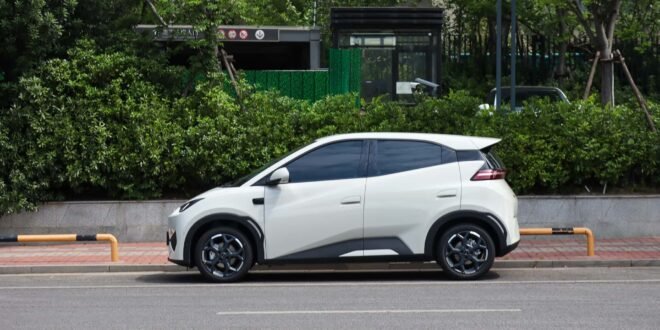The Future of Electric Vehicle Manufacturing in China
The electric vehicle (EV) market is experiencing a dramatic transformation, particularly in China. According to a recent report, out of nearly 130 EV manufacturers, only 15 may survive by 2030. This prediction highlights the intense competition and rapid consolidation that is taking place within the industry.
China has the world’s largest car market, especially when it comes to plug-in vehicles. Over the past decade, the market has seen exponential growth, with an explosion of brands vying for consumer attention. However, the market is now maturing, and growth is slowing down. As a result, smaller brands are beginning to disappear, either through bankruptcy or acquisition by larger players.
One of the most recent examples of this trend is Neta, a Chinese automaker that went bankrupt in June. This follows a pattern of several promising EV startups also going out of business. These companies had previously made a strong impression at events like the 2024 Beijing Auto Show, but their financial struggles have led to their eventual collapse.
A similar trend was observed in the United States over a century ago. In 1908, there were 253 car manufacturers, but by 1929, the number had dropped to just 44. This culling of brands was initially attributed to the Great Depression, but it continued even after economic recovery and through the post-World War II boom. Eventually, the industry consolidated into what became known as the Big Three: General Motors, Chrysler, and Ford.
China is expected to follow a similar trajectory. A report by global consulting firm AlixPartners predicts that out of today’s 129 plug-in car manufacturers, only around 15 will remain by 2030. The report suggests that each of the surviving big brands will achieve average annual sales of around 1 million units. While the report does not specify which brands will survive, it is reasonable to assume that major names such as BYD, Geely, Changan, and Chery will be among them.
The competition between carmakers in China is fierce, leading to what is known as a price war. This competition is expected to continue, gradually eliminating all but the most competitive players. Although Chinese regulators have urged automakers to stop undercutting each other on price, this practice is likely to persist in different forms, such as through finance or insurance deals.
Several industry leaders have echoed the sentiment that the number of carmakers will continue to shrink. He Xiaopeng, the CEO of Xpeng, recently stated that he believes “most” Chinese car brands will be gone in 10 years. He predicted that only seven very large carmakers would remain. Similarly, automotive engineering professor Zhu Xican suggested that startups like Xpeng, Nio, or Li Auto will need to merge or disappear, as they cannot survive on their own. He argued that any carmaker selling fewer than 2 million units annually would struggle to sustain R&D costs and would fall behind technologically.
To stay afloat, Chinese automakers must also look beyond their domestic market. The AlixPartners report suggests that Chinese automakers could double their market share in Europe and reach 10% by 2030. Already, Chinese plug-in vehicles are becoming more common in European countries, and many automakers are exploring opportunities to set up production facilities there to avoid import tariffs.
Domestically, Chinese car brands are performing exceptionally well. Their market share reached 67% in 2025, and this upward trend shows no signs of slowing down. Consumers are increasingly favoring local brands, even if the cars are locally manufactured with modifications tailored to Chinese buyers. However, with such fierce competition, even in a growing market, it may be difficult for most companies to survive.
As the EV market continues to evolve, the path forward for Chinese automakers will require innovation, strategic expansion, and resilience. Only those that can adapt to changing conditions and maintain a competitive edge will endure in the long term.
 Info Malang Raya Its All About World News
Info Malang Raya Its All About World News



